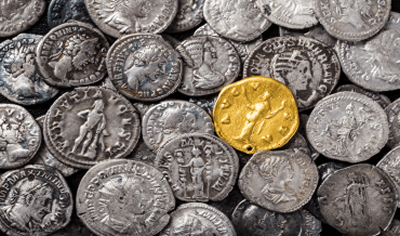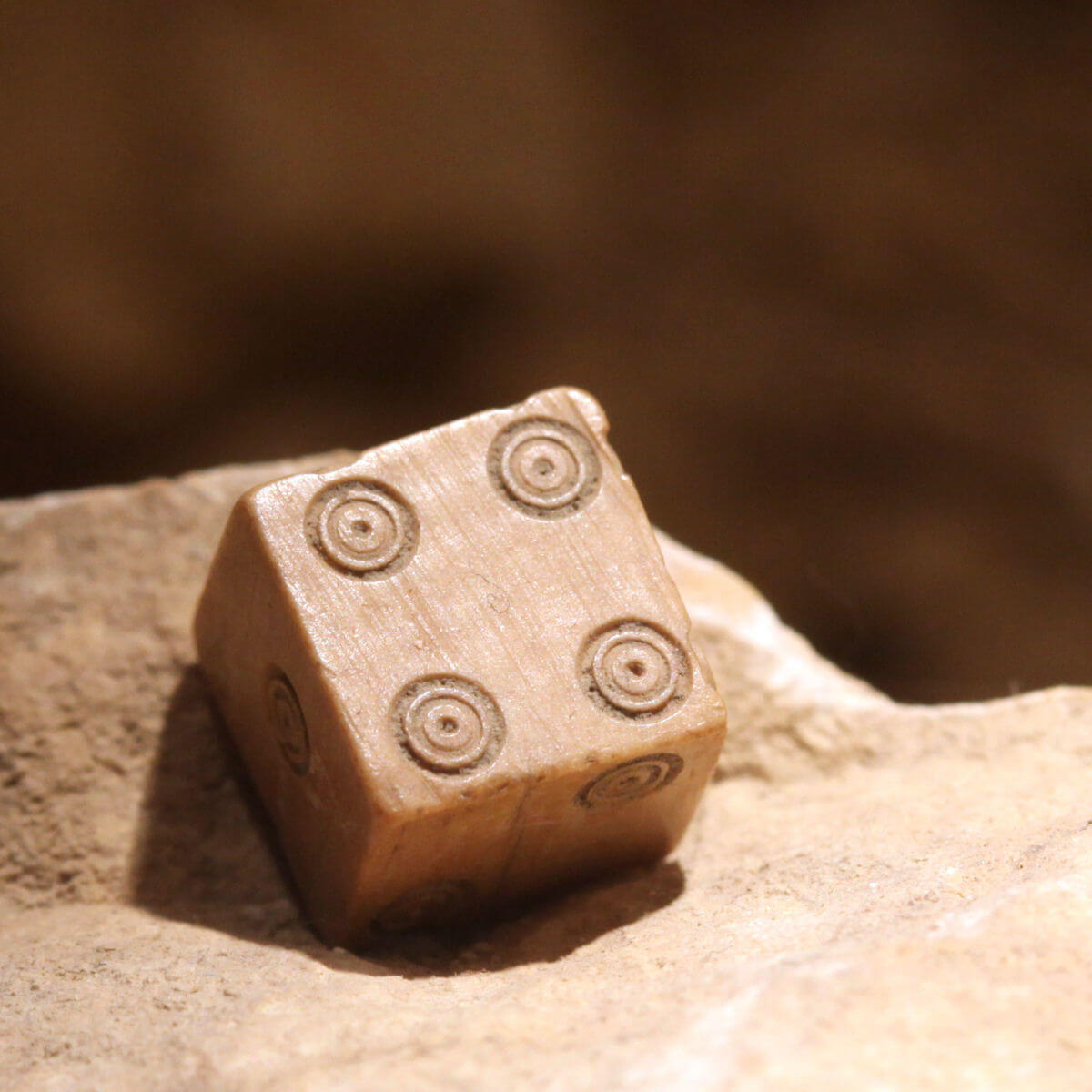Introduction

While gladiator matches are the most famous form of Roman entertainment, they were far from the only ones. Ancient Romans were avid gameplayers who enjoyed contests of chance and skill. As with many of their activities, they saw strong connections between the outcomes and their standing with the gods.
Gambling was even more popular than games. Wagering crossed Roman social classes and status, and, while technically illegal, was widely practiced. Lower classes would participate in street games and place bets, while the wealthy often had rooms in their villas dedicated to gaming and gambling.
Board Games
Roman board games were played on cloth, wood, or marble boards using stone game pieces. Game boards were even etched into amphitheater steps and other public spaces to allow people to play where they congregated. These games were primarily about strategy and relied on skill.
Terni Lapilli, a precursor to tic-tac-toe, involved a playing grid of boxes, crossed lines, or wheel-shaped patterns. The rules were complex, and matches required immense logic and forethought to win.
Ludus Latrunculorum, which meant "game of mercenaries," was an intricate strategy game that simulated conflict. There was no fixed size to the game board, and playing on a larger surface lengthened the game time and increased the difficulty. In many ways, Ludus Latrunculorum was a forerunner to chess.
Tabula and Duodecim Scripta involved moving game pieces around a board in a head-to-head race, similar to backgammon.
Members of the Roman legions frequently played board games. Soldiers used cloth and lightweight boards that were easy to transport because they needed entertainment on their long marches and far away deployments.
Dice Games
The first historical evidence of dice games dates back to the Egyptians in 3,000 BC, but historians acknowledge societies likely had them even earlier. The ancient Romans played Tali and Tesserae using dice.

Photograph by Rama, Wikimedia Commons, Cc-by-sa-2.0-fr, CC BY-SA 2.0 FR, via Wikimedia Commons
An ancient Roman dice on display at The Roman Museum in Lausanne-Vidy, Switzerland
Tali, which originated in Greece, was adopted by the Romans. It featured four dice and animal bones. The goal was to roll and have each die displaying a different number. The greater the combination, the higher the score.
Tesserae used three dice, with the goal being to roll three sixes or the highest combined numbers. It was a pure game of chance that was the most common tavern and street gambling game.
Players threw dice using a fritillium, a special cup. Romans played on wood, bronze, or marble boards, depending on their class and wealth. Elite Romans had ornate boards inscribed with their names. You could roll “dogs,” which were bad scores, or “Venus,” which were high scores.
The obsession with dice flowed naturally into gambling on outcomes. Many Romans racked up massive debts, leading to strife and crime. The problems became so rampant that the government outlawed dice games. These laws were, however, largely ignored, and dice remained a popular pastime.
Gambling
Gambling was rampant in ancient Rome. People with money could bet on dice games, gladiatorial matches, chariot races, and other spectator sports. Many believed it fed moral rot. The poet Horace wrote, "...the young Roman is no longer devoted to the manly habits of riding and hunting. His skill seems to develop more in the games of chance forbidden by law." As Imperial Rome progressed, gambling became even more pervasive.
Laws
Gambling was heavily regulated and policed by soldiers for much of the Republican and Imperial eras. Dice was forbidden from being played in the streets. Government officials worried about the person-to-person violence and potential rioting that came with widespread gambling. Wariness over gamblers' use of the dark arts and magic to secure victory further fueled concern about games of chance.
Roman women could only place bets during the Bona Dea festival, which celebrated the agrarian god. Men gambled during the Saturnalia festival, which honored the god Saturn. Social barriers were relaxed and inverted for one week, allowing slaves to gamble alongside their masters. Illegal gambling was punished with a fine. However, many Romans ignored the laws and gambled privately in their homes and among their friends.
Beyond private gambling, businesses welcomed the activity with very little discretion. Archeologists have found ruins of taverns with signs stating, “Good food and gambling within.” There are even relics of playing tables with the message “make room for better players” inscribed across them.
Cheating
Professional gamblers looked to profit off of others. Archeologists have found evidence of weighted coins and loaded dice that were used to rig games of chance. Heavily trafficked cities like Pompeii, a major port, were rife with predatory gamblers looking to exploit drunk and weary travelers.
Not surprisingly, there was little recourse for victims to seek restitution because gambling was illegal. As a result, cheating led to fights and violence.
Related External Links:
- Why ancient Romans used sketchy, lopsided dice to gamble and play board games
- Changing public policy and the evolution of Roman civil and criminal law on gambling



